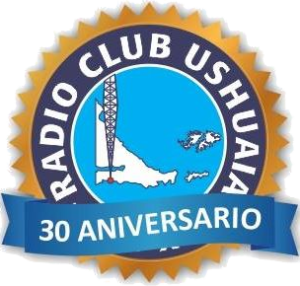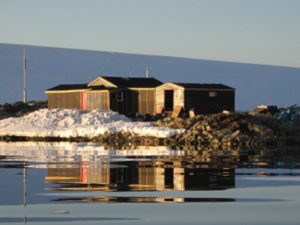 Wordie House (Pic aside) was established by the British Falkland Islands Dependencies Survey on 7 January 1947, on Winter Island (65°15’S, 64°16’W). The hut is named after the chief scientist, Sir James Wordie, geologist on Shackleton’s Endurance expedition of 1914–17 who visited during its construction. The hut stands on the foundations of an earlier building, used by the British Graham Land Expedition from 1935–36. The original hut was destroyed in 1946, possibly by a tsunami.
Wordie House (Pic aside) was established by the British Falkland Islands Dependencies Survey on 7 January 1947, on Winter Island (65°15’S, 64°16’W). The hut is named after the chief scientist, Sir James Wordie, geologist on Shackleton’s Endurance expedition of 1914–17 who visited during its construction. The hut stands on the foundations of an earlier building, used by the British Graham Land Expedition from 1935–36. The original hut was destroyed in 1946, possibly by a tsunami.
The base was renamed Faraday Station in August 1977 in honor of British scientist Michael Faraday. In May 1954, the base moved to the present site on adjacent Galindez Island where the main building was named “Coronation House”. Station “F” Faraday was referenced by WAP Worldwide Antarctic Program, as WAP GBR-Ø6.
In February 1996, Ukraine took over the operation of Faraday Base “F” which was sold by the UK for a symbolic one pound. The cost of disassembling the base with good environmental practices and standards would be too costly. 
The National Antarctic Scientific Center of Ukraine continues a study and research program of several branches of the science and the new fully rebuilt station vas named Vernadsky (WAP UKR-Ø1)
Wordie House (WAP GBR-Ø7) has been restored and is designated as Historic Site and Monument No. 62 and now is a BAS Museum. The key to the Wordie House is held by the Vernadsky Base Commander.
During this 2019 Antarctic winter season, Roman Bratchyk, UT7UA is active as EM1UA from Vernadsky Station (WAP UKR-Ø1) QSL via UT7UA & VP8CTR from Wordie House (WAP GBR-Ø7) QSL via DL5EBE

 Perseverance DX Group has announced the intention to activate South Orkney Islands, and is planning an expedition to take places in February/March 2020. A team of experienced DX and Contest operators will operate from Signy Island (WAP GBR-Ø9) for up to 15 days. The process of obtaining landing permission is underway. The call sign will be announced at a later date. The team will sail from Punta Arenas, Chile aboard R/V Braveheart. Seven operating positions are planned for 160-10 meters, SSB/CW/Digital.
Perseverance DX Group has announced the intention to activate South Orkney Islands, and is planning an expedition to take places in February/March 2020. A team of experienced DX and Contest operators will operate from Signy Island (WAP GBR-Ø9) for up to 15 days. The process of obtaining landing permission is underway. The call sign will be announced at a later date. The team will sail from Punta Arenas, Chile aboard R/V Braveheart. Seven operating positions are planned for 160-10 meters, SSB/CW/Digital.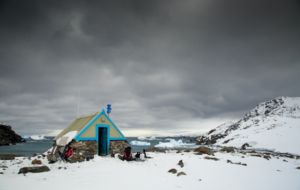 WAP archive has pics of field Huts still in place at the following un-referencended sites of Signy Islands in the South Orkneys:
WAP archive has pics of field Huts still in place at the following un-referencended sites of Signy Islands in the South Orkneys: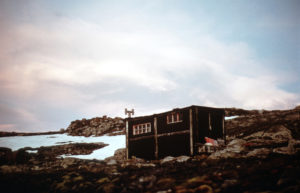
 also has some amazing views, just from the hut across Rock Haven, a popular spot for seals as well as penguins .The Gourlay peninsula 60°44’ South, 45°36’ West, is an ice-free site that guests 2 Huts; the hut on the left is a standard hut with a couple of bunks and on the right is the work hut.
also has some amazing views, just from the hut across Rock Haven, a popular spot for seals as well as penguins .The Gourlay peninsula 60°44’ South, 45°36’ West, is an ice-free site that guests 2 Huts; the hut on the left is a standard hut with a couple of bunks and on the right is the work hut.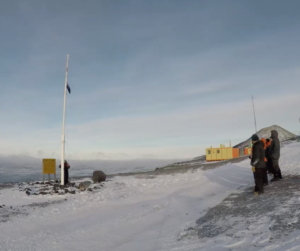 WAP joins the solidarity with Christchurch shooting victims expressed WW on last 15th March’s tragic day.
WAP joins the solidarity with Christchurch shooting victims expressed WW on last 15th March’s tragic day.
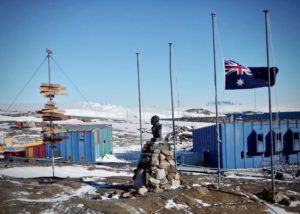 flag was flown at half mast in support of all NZ following the appalling events that occurred in Christchurch.
flag was flown at half mast in support of all NZ following the appalling events that occurred in Christchurch.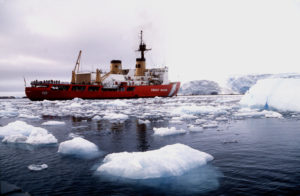
 Owned by the Masaryk University, the Johann Gregor Mendel Polar Station (63°48’ 02” South, 57°52’56” West)
Owned by the Masaryk University, the Johann Gregor Mendel Polar Station (63°48’ 02” South, 57°52’56” West) 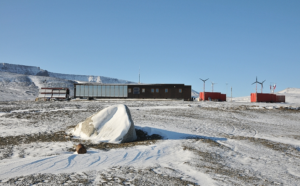 The Chilean military icebreaker Almirante Viel did transfer everything from Punta Arenas the James Ross Island in 2005. A deep geometric survey was performed as well as the foundations of the main station building and technical containers area. The official opening ceremony took place in February 2007 and made the Czech Republic the 26th Country to have its own Scientific Base on the Icy Continent.
The Chilean military icebreaker Almirante Viel did transfer everything from Punta Arenas the James Ross Island in 2005. A deep geometric survey was performed as well as the foundations of the main station building and technical containers area. The official opening ceremony took place in February 2007 and made the Czech Republic the 26th Country to have its own Scientific Base on the Icy Continent. relaxation and laboratory activities, and of nine technical containers in the vicinity of the building, which hold storehouses, garages and the power supply generator.
relaxation and laboratory activities, and of nine technical containers in the vicinity of the building, which hold storehouses, garages and the power supply generator.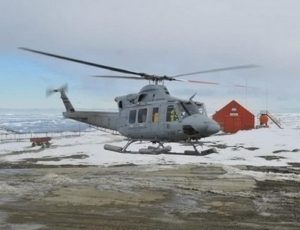 Members of the Argentine armed forces rescued a crew of 13 scientists from the Czech Republic that was stranded in Antarctica, under adverse weather conditions.
Members of the Argentine armed forces rescued a crew of 13 scientists from the Czech Republic that was stranded in Antarctica, under adverse weather conditions.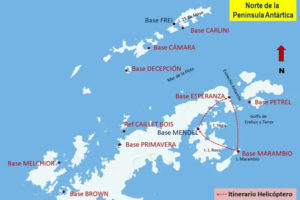 (COCOANTAR), who received the request for rescue from part of the scientific endowment of the Czech Antarctic base .
(COCOANTAR), who received the request for rescue from part of the scientific endowment of the Czech Antarctic base . To manage the Antarctic WAP Awards and its subsequent updates, the best solution is to use the WAP Software, set by IK6CAC.
To manage the Antarctic WAP Awards and its subsequent updates, the best solution is to use the WAP Software, set by IK6CAC.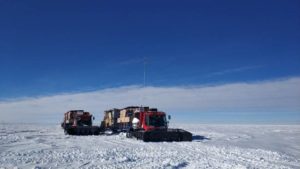
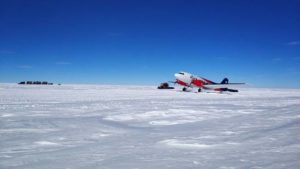 WAP is in contact with Oleg who has sent us pictures and details of the activity from the “Traverse Stop Point –Temporary Field Camp” from where Oleg RI1ANX did operate from 1 through 7 January 20019.
WAP is in contact with Oleg who has sent us pictures and details of the activity from the “Traverse Stop Point –Temporary Field Camp” from where Oleg RI1ANX did operate from 1 through 7 January 20019.
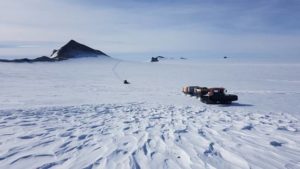 At the light of the evidence provided by Oleg Sakharov RI1ANX (aka ZS1ANF-UA1PBA) and to the 77 QSOs made from there.
At the light of the evidence provided by Oleg Sakharov RI1ANX (aka ZS1ANF-UA1PBA) and to the 77 QSOs made from there. The British Antarctic Survey has closed its Halley 6 Base (WAP GBR-37) for another winter.
The British Antarctic Survey has closed its Halley 6 Base (WAP GBR-37) for another winter.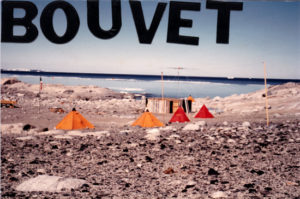 A question did arise among the Antarctic Ham Radio community about the location of LB4LC whose QSL card seems to say he did operate as /3Y in 1986.
A question did arise among the Antarctic Ham Radio community about the location of LB4LC whose QSL card seems to say he did operate as /3Y in 1986.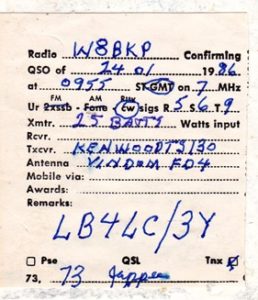
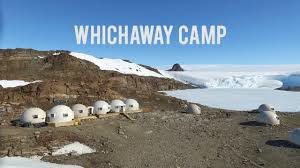
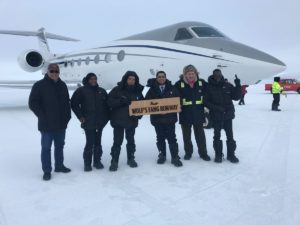
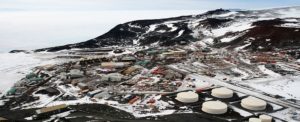 The National Science Board (NSB) has authorized the National Science Foundation (NSF) to move forward with the Antarctic Infrastructure Modernization for Science (AIMS) project. AIMS is planned as a 10-year undertaking to overhaul McMurdo Station into an energy- and operationally efficient platform from which to support world-class science. Through its Office of Polar Programs (OPP), NSF manages the U.S. Antarctic Program, which funds and facilitates the nation’s scientific endeavors on the southernmost continent and the waters around it. Thanks and Credit NSF.
The National Science Board (NSB) has authorized the National Science Foundation (NSF) to move forward with the Antarctic Infrastructure Modernization for Science (AIMS) project. AIMS is planned as a 10-year undertaking to overhaul McMurdo Station into an energy- and operationally efficient platform from which to support world-class science. Through its Office of Polar Programs (OPP), NSF manages the U.S. Antarctic Program, which funds and facilitates the nation’s scientific endeavors on the southernmost continent and the waters around it. Thanks and Credit NSF.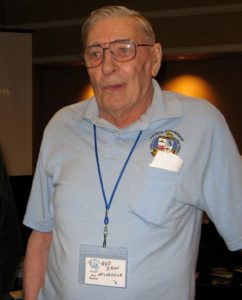 oming across a social network, I found an interesting page, set by someone set foot in Antarctica and left a tangible sign of what they did!
oming across a social network, I found an interesting page, set by someone set foot in Antarctica and left a tangible sign of what they did!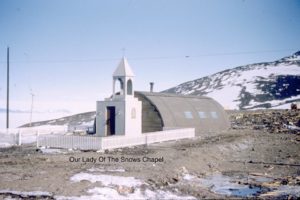 a bell from one of them somehow made its way up the hill to its place in the belfry. On May 6,1956, the Chapel was consecrated to Our Lady of the Snows and the bell consecrated to Saint Dismas, the good thief.”
a bell from one of them somehow made its way up the hill to its place in the belfry. On May 6,1956, the Chapel was consecrated to Our Lady of the Snows and the bell consecrated to Saint Dismas, the good thief.”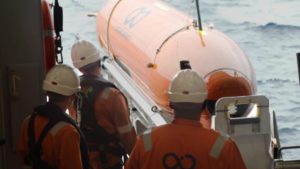 Antarctic hunt for Endurance wreck, ends after expedition loses undersea drone in “evil conditions”
Antarctic hunt for Endurance wreck, ends after expedition loses undersea drone in “evil conditions”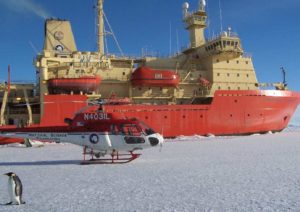 Acting on the advice of medical experts, National Science Foundation (NSF) officials have directed the NSF-chartered research vessel Nathaniel B. Palmer to put ashore a person in need of a level of care not available aboard the ship.
Acting on the advice of medical experts, National Science Foundation (NSF) officials have directed the NSF-chartered research vessel Nathaniel B. Palmer to put ashore a person in need of a level of care not available aboard the ship.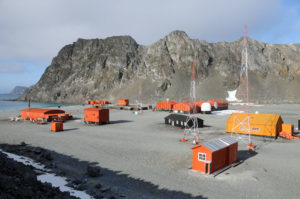 115 years of uninterrupted Argentine permanence in Antarctica!
115 years of uninterrupted Argentine permanence in Antarctica!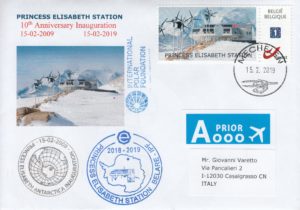 The link between Belgium and the Antarctic has always been strong since the first overwintering of the scientific expedition led by Adrien de Gerlache from 1897 to 1899, passing through the construction of the King Baudouin Base (
The link between Belgium and the Antarctic has always been strong since the first overwintering of the scientific expedition led by Adrien de Gerlache from 1897 to 1899, passing through the construction of the King Baudouin Base (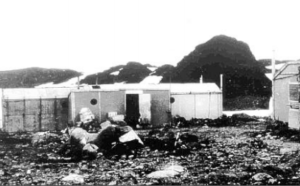 The Polish Academy of Sciences (PAN) has signed an agreement with Geoscience Australia establishing joint research in the Antarctic. The cooperation between the two countries includes the exchange of scientific thought and technology as well as the exchange of scientific data for the development of maritime and land research on the Antarctic continent. As a part of that agreement, the Polish Antoni Dobrowolski Station is set to be reactivated. Poland has two research stations in the Antarctic: the H. Arctowski Station in the Southern Shetlands, in constant use since 1977, and the Antoni Dobrowolski Station in the Bunger Oasis in eastern Antarctica, which has been unused since 1979.
The Polish Academy of Sciences (PAN) has signed an agreement with Geoscience Australia establishing joint research in the Antarctic. The cooperation between the two countries includes the exchange of scientific thought and technology as well as the exchange of scientific data for the development of maritime and land research on the Antarctic continent. As a part of that agreement, the Polish Antoni Dobrowolski Station is set to be reactivated. Poland has two research stations in the Antarctic: the H. Arctowski Station in the Southern Shetlands, in constant use since 1977, and the Antoni Dobrowolski Station in the Bunger Oasis in eastern Antarctica, which has been unused since 1979. The first Polish expedition to the Bunger Oasis in forty years is planned to leave in three to four years with the use of a modern Australian ice-breaker, the Nuyina.
The first Polish expedition to the Bunger Oasis in forty years is planned to leave in three to four years with the use of a modern Australian ice-breaker, the Nuyina.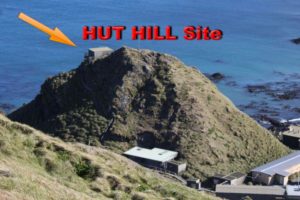 ve learnt something we didn’t know before, and the various point of view have been transformed into certainty. Just to sum up, a revision of Macquarie paragraph on the WAP-WADA Directory will be as follow:
ve learnt something we didn’t know before, and the various point of view have been transformed into certainty. Just to sum up, a revision of Macquarie paragraph on the WAP-WADA Directory will be as follow: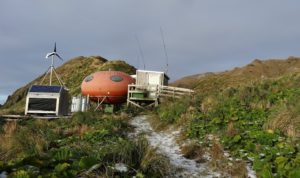
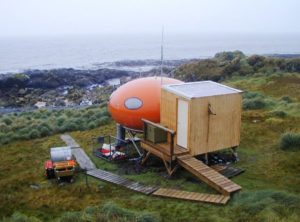
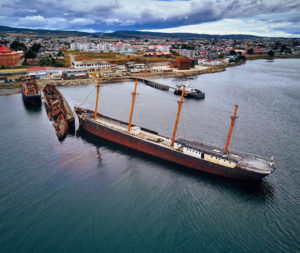 Faro Pontón Muñoz Gamerois a light house located at Punta del Rio, at the Punta Arenas Bay at 53° 10′ 33” South, 70° 55′ 6” West .
Faro Pontón Muñoz Gamerois a light house located at Punta del Rio, at the Punta Arenas Bay at 53° 10′ 33” South, 70° 55′ 6” West .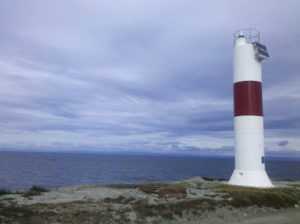 Built in 1928 at 53° 18′ 56” South, 70° 27′ 26” West the lighthouse Bahía Porvenir is a lighthouse located in Tierra del Fuego on Porvenir Bay on the Chilean Tierra del Fuego
Built in 1928 at 53° 18′ 56” South, 70° 27′ 26” West the lighthouse Bahía Porvenir is a lighthouse located in Tierra del Fuego on Porvenir Bay on the Chilean Tierra del Fuego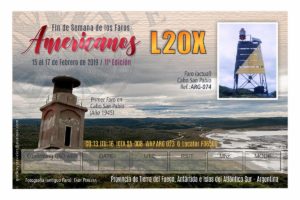 ACA and on the WAP-LH Directory.
ACA and on the WAP-LH Directory.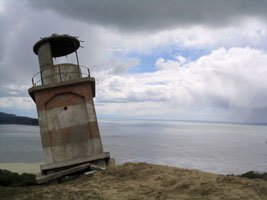 The lighthouse are located on the Cape of the same name, on an isolated mountain, very characteristic for its rounded shape that protrudes from the coastline. Its construction began on March 15, 1945, and during the month of December 1949 there was a seismic movement that caused a dangerous inclination of the tower, a situation that forced the removal of the luminous equipment and deactivated the signal. The building, still remains onsite and it will be activated for the first time in its history.
The lighthouse are located on the Cape of the same name, on an isolated mountain, very characteristic for its rounded shape that protrudes from the coastline. Its construction began on March 15, 1945, and during the month of December 1949 there was a seismic movement that caused a dangerous inclination of the tower, a situation that forced the removal of the luminous equipment and deactivated the signal. The building, still remains onsite and it will be activated for the first time in its history. 2) New LH at Cabo San Pablo, ARLHS ARG 074, WAP ARG-LH-NEW
2) New LH at Cabo San Pablo, ARLHS ARG 074, WAP ARG-LH-NEW 
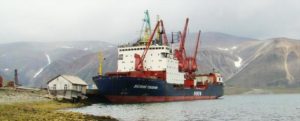 According to NCPOR the 38th Indian Antarctic Research Expedition will use the Icebreaker “Vasiliy Golovnin” for supply the Indian Scientific Bases in the Icy Continent. FESCO Transportation Group signed a contract with the National Centre for Polar and Ocean Research (NCPOR, Ministry of Earth Sciences, Government of India) for 2019 Antarctic Season.
According to NCPOR the 38th Indian Antarctic Research Expedition will use the Icebreaker “Vasiliy Golovnin” for supply the Indian Scientific Bases in the Icy Continent. FESCO Transportation Group signed a contract with the National Centre for Polar and Ocean Research (NCPOR, Ministry of Earth Sciences, Government of India) for 2019 Antarctic Season.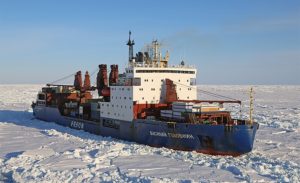 scientists are joining to this expedition aboard FESCO vessel. The ship did start its Antarctic voyage, under the command of Captain Iksan Yusupov, at the port of Cape Town last January 26th with members of the 38th IAE led by Dr Shailendra Saini.
scientists are joining to this expedition aboard FESCO vessel. The ship did start its Antarctic voyage, under the command of Captain Iksan Yusupov, at the port of Cape Town last January 26th with members of the 38th IAE led by Dr Shailendra Saini.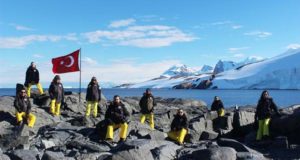 A Turkish expedition team, departed for Antarctica to set up a temporary scientific research base, arrived in the world’s coldest continent on Monday Feb. 4.
A Turkish expedition team, departed for Antarctica to set up a temporary scientific research base, arrived in the world’s coldest continent on Monday Feb. 4.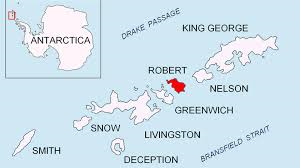 sources indicate Robert Island as a possible site, where in 2018, 28 Turkish researchers built the country’s first campsite.
sources indicate Robert Island as a possible site, where in 2018, 28 Turkish researchers built the country’s first campsite.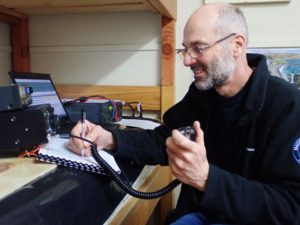 Macca Station Communications Tech, Norbert Trupp VK5MQ, is the Ham radio operator actually at Macquarie (WAP AUS-Ø8). He spends some of his spare time working other Hams worldwide operating as VKØAI from the shack set on Hut Hill, facing the East coast’s sea just in opposite site of the main building’s station of Macquarie.
Macca Station Communications Tech, Norbert Trupp VK5MQ, is the Ham radio operator actually at Macquarie (WAP AUS-Ø8). He spends some of his spare time working other Hams worldwide operating as VKØAI from the shack set on Hut Hill, facing the East coast’s sea just in opposite site of the main building’s station of Macquarie.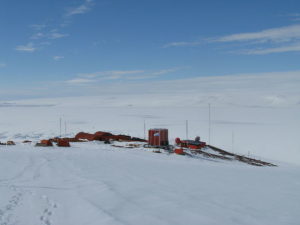 BaseBelgrano II was founded on February 5, 1979, to replace the Belgrano I (WAP ARG-Ø5). Subsequently, a third base, Belgrano III (WAP ARG-Ø7), was added, which was in operation from 1980 to 1984 when it was deactivated and evacuated on January 14, 1984
BaseBelgrano II was founded on February 5, 1979, to replace the Belgrano I (WAP ARG-Ø5). Subsequently, a third base, Belgrano III (WAP ARG-Ø7), was added, which was in operation from 1980 to 1984 when it was deactivated and evacuated on January 14, 1984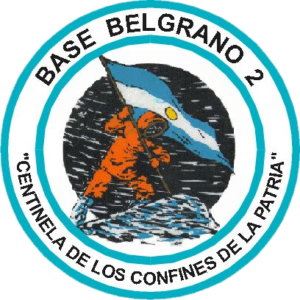 , due to the glaciological composition endangering personnel and equipment.
, due to the glaciological composition endangering personnel and equipment.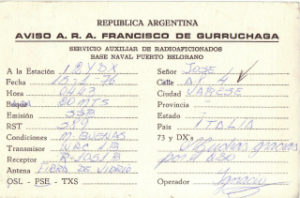
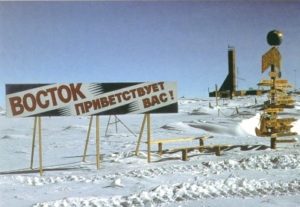 Alexey Turkeev, RD1AV is the Season team leader at Vostok Station (WAP RUS-13). He is active in his spare time since last December 2018 and will be there until the end of February 2019 as RI1ANV , sometimes in tandem with Alex (Alexander Solodov, RX3ABI) signing RI1ANM. They operate SSB, CW and FT8
Alexey Turkeev, RD1AV is the Season team leader at Vostok Station (WAP RUS-13). He is active in his spare time since last December 2018 and will be there until the end of February 2019 as RI1ANV , sometimes in tandem with Alex (Alexander Solodov, RX3ABI) signing RI1ANM. They operate SSB, CW and FT8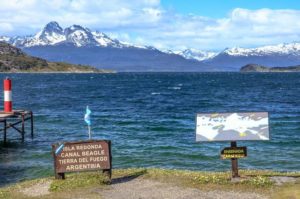 Redonda Island 54° 51′ 49″South, 68° 28′ 54″ West, is a small island territory at the mouth of Lapataia Bay, belonging to the Ushuaia Department of the Province of Tierra del Fuego, Antarctica and the South Atlantic Islands in the southern tip of Argentina.
Redonda Island 54° 51′ 49″South, 68° 28′ 54″ West, is a small island territory at the mouth of Lapataia Bay, belonging to the Ushuaia Department of the Province of Tierra del Fuego, Antarctica and the South Atlantic Islands in the southern tip of Argentina.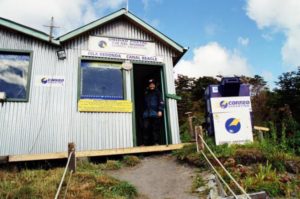 Hut residence of which, ruins still remain in site. Actually, a small detachment of the Naval Prefecture hosts 3 person and the site is equipped with a kitchen, dining room, two rooms and a radio room that serves to communicate with all ships and boats that navigate the area.
Hut residence of which, ruins still remain in site. Actually, a small detachment of the Naval Prefecture hosts 3 person and the site is equipped with a kitchen, dining room, two rooms and a radio room that serves to communicate with all ships and boats that navigate the area.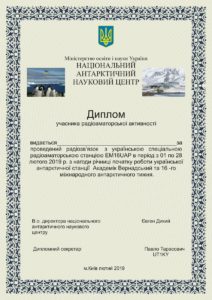 EM16UAP, Ukrainian Antarctic Program (WAP 295) is a special call sign on the occasion of the start beginning of the work at the Ukrainian Antarctic Station Academik Vernadsky (WAP UKR-Ø1), which began its activities in Antarctica on February 6, 1996 and now is joining the 16th International Antarctic Week (AAW). QSL via UT1KY
EM16UAP, Ukrainian Antarctic Program (WAP 295) is a special call sign on the occasion of the start beginning of the work at the Ukrainian Antarctic Station Academik Vernadsky (WAP UKR-Ø1), which began its activities in Antarctica on February 6, 1996 and now is joining the 16th International Antarctic Week (AAW). QSL via UT1KY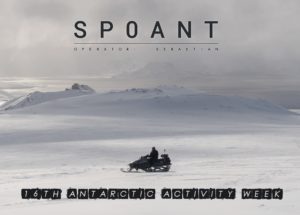 Another ”New Entry” in the 16th AAW is Sebastian Gleich SQ1SGB who has got his AAW callsign as SPØANT (WAP-298) and will join the International Antarctic Activity Week. QSL via SQ1SGB.
Another ”New Entry” in the 16th AAW is Sebastian Gleich SQ1SGB who has got his AAW callsign as SPØANT (WAP-298) and will join the International Antarctic Activity Week. QSL via SQ1SGB.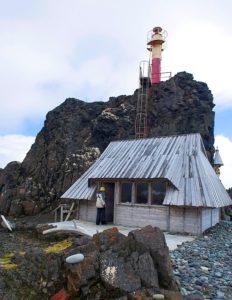
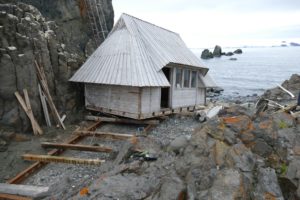 s a “Turist house”! Upon being established, its location was barely a dozen meters from the sea. Now, during high tide, it is less than a meter away. That little house, was build in 1998 from wood waste after the general rebuild of the Station. The main builders was Zubek brothers and Suszczewski, originator and chief builder of Arctowski.
s a “Turist house”! Upon being established, its location was barely a dozen meters from the sea. Now, during high tide, it is less than a meter away. That little house, was build in 1998 from wood waste after the general rebuild of the Station. The main builders was Zubek brothers and Suszczewski, originator and chief builder of Arctowski.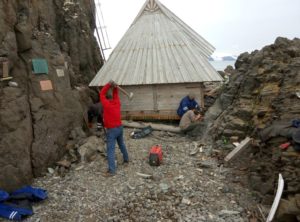
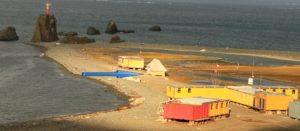
 rctica; while the first
rctica; while the first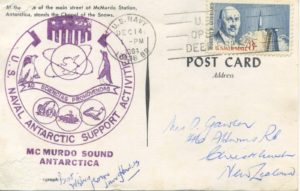 ay be the oldest Antarctic relic on the continent.
ay be the oldest Antarctic relic on the continent.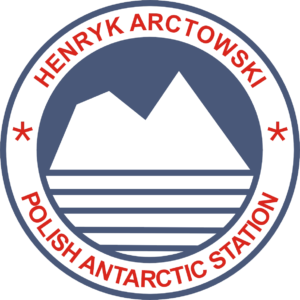 Last 2017, Sebastian (Seba) Gleich, SQ1SGB electronics engineer was overwintering in Antarctica, among the 41st Polish Scientific Expedition, with the task of monitoring of the atmosphere’s electricity. Beside Arctowski Station (WAP POL-Ø1), Poland own two field bases : Lions Rump Refuge (WAP POL-NEW) and Demay Point Refuge (WAP POL-NEW).
Last 2017, Sebastian (Seba) Gleich, SQ1SGB electronics engineer was overwintering in Antarctica, among the 41st Polish Scientific Expedition, with the task of monitoring of the atmosphere’s electricity. Beside Arctowski Station (WAP POL-Ø1), Poland own two field bases : Lions Rump Refuge (WAP POL-NEW) and Demay Point Refuge (WAP POL-NEW).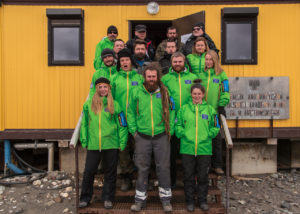 Being an electronic specialist, Seba did work at Lions Rump Refuge (30 km away) to build communication stuff to link Arctowski main station. He sets the mast with antenna at the highest site using all of RG 213 cable available then, he realized that he could not connect his delta mini to the transceiver, without feeder.
Being an electronic specialist, Seba did work at Lions Rump Refuge (30 km away) to build communication stuff to link Arctowski main station. He sets the mast with antenna at the highest site using all of RG 213 cable available then, he realized that he could not connect his delta mini to the transceiver, without feeder.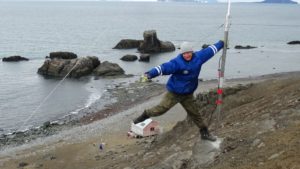 After a couple weeks all was ready. All wintering crew did help me to set the hardware, mast and antennas . It was very hard; we had to pull the top and put something under the center with risk of collapse, then we attached the lashings. It was a long day but at the end, the new mast with my delta mini was on, with a good SWR.
After a couple weeks all was ready. All wintering crew did help me to set the hardware, mast and antennas . It was very hard; we had to pull the top and put something under the center with risk of collapse, then we attached the lashings. It was a long day but at the end, the new mast with my delta mini was on, with a good SWR. At the beginning, for two weeks I could not find propagation window (only 3 QSO’s ), so I decided to build a converter for digital modes. It did take me around one month. I make separation trafo from old analog phone, another one from a network card and on july 15,2017 I was on air (pics aside: the digital converter while in assembly). On JT65 and FT8 I make a lots of QSO, as well as on SSB.
At the beginning, for two weeks I could not find propagation window (only 3 QSO’s ), so I decided to build a converter for digital modes. It did take me around one month. I make separation trafo from old analog phone, another one from a network card and on july 15,2017 I was on air (pics aside: the digital converter while in assembly). On JT65 and FT8 I make a lots of QSO, as well as on SSB.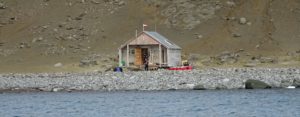 Henryk Arctowski Polish Antarctic Station (WAP POL-Ø1), is located on King George Island in the South Shetland archipelago and it has been operating since the late 1970s.
Henryk Arctowski Polish Antarctic Station (WAP POL-Ø1), is located on King George Island in the South Shetland archipelago and it has been operating since the late 1970s.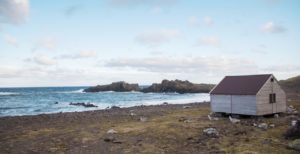
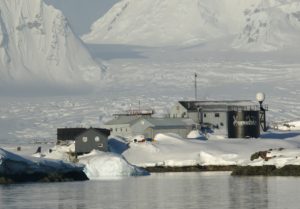
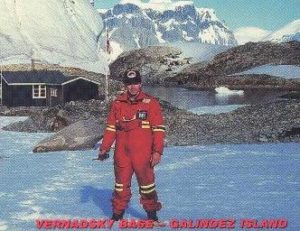 , is among the Team actually travelling to reach Vernadsky Base, Galindez Island; Ronan will operate on HF Bands on his spare time, signing EM1UA and EM1U .
, is among the Team actually travelling to reach Vernadsky Base, Galindez Island; Ronan will operate on HF Bands on his spare time, signing EM1UA and EM1U .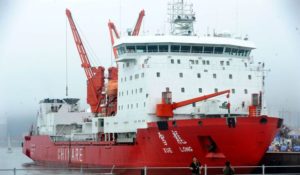 The MV Xue Long (which translates as Snow Dragon), was moving through the Amundsen Sea in “dense ice” when it struck the iceberg, China’s Ministry of Natural Resources said in a notice posted on its website.
The MV Xue Long (which translates as Snow Dragon), was moving through the Amundsen Sea in “dense ice” when it struck the iceberg, China’s Ministry of Natural Resources said in a notice posted on its website.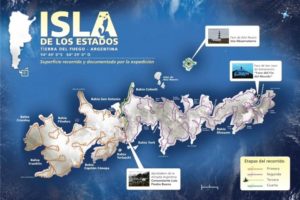 oday we’ll see WAP ARG-29.
oday we’ll see WAP ARG-29.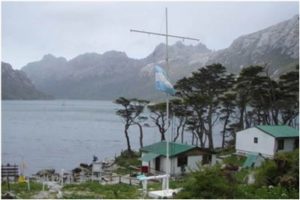 WAP ARG-29 – Isla de los Estados (Staten island) 54°47′00″South, 64°15′00″West, hosts a scientific station (pic aside) of the CADIC (Centro Austral de Investigaciones Científicas). In other sites of the Island, there are Scientific Stations that study different aspects of flora, fauna, etc. which, forced us to decide to inserted Isla de los Estados as a “New entry” into the WAP Directory.
WAP ARG-29 – Isla de los Estados (Staten island) 54°47′00″South, 64°15′00″West, hosts a scientific station (pic aside) of the CADIC (Centro Austral de Investigaciones Científicas). In other sites of the Island, there are Scientific Stations that study different aspects of flora, fauna, etc. which, forced us to decide to inserted Isla de los Estados as a “New entry” into the WAP Directory.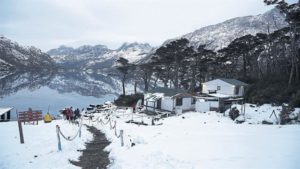 Com. Luis Piedrabuena Naval oupost (Apostadero Naval Piedrabuena) of the Argentine Navy.
Com. Luis Piedrabuena Naval oupost (Apostadero Naval Piedrabuena) of the Argentine Navy.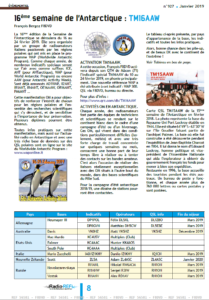 In the last issue of Radio Ref. January 2019, the French radio magazine there an article about the 16th AAW (Antarctic Activity Week) , written by François F8DVD – TM16AAW .
In the last issue of Radio Ref. January 2019, the French radio magazine there an article about the 16th AAW (Antarctic Activity Week) , written by François F8DVD – TM16AAW .
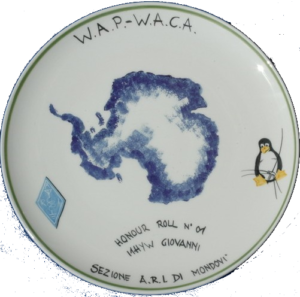 2019 Edition of the WAP-WACA & WAP-WADA directories (release 1.33 of Jan 16th 2019) have been uploaded on WAP website together with the IK6CAC software (release 032 to manage your WAP Awards). The 2019’s edition contains the new entries such as new Antarctic sites come to light or identified last year.
2019 Edition of the WAP-WACA & WAP-WADA directories (release 1.33 of Jan 16th 2019) have been uploaded on WAP website together with the IK6CAC software (release 032 to manage your WAP Awards). The 2019’s edition contains the new entries such as new Antarctic sites come to light or identified last year. references and a list of callsigns that qualify each of the references assigned.
references and a list of callsigns that qualify each of the references assigned.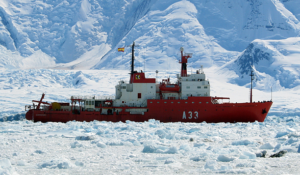 Spanish Antarctic Campaign. About two hundred scientists and technicians will be in charge of the research projects, which will be carried out in the transits of the ship which will serve as a platform for carrying out 24 research projects. The deglaciation of the Antarctic, the activity of submarine volcanoes and the impact of parasites and contaminants on the penguin’s immune system, are some of the most outstanding projects in the XXXII Spanish Antarctic Campaign.
Spanish Antarctic Campaign. About two hundred scientists and technicians will be in charge of the research projects, which will be carried out in the transits of the ship which will serve as a platform for carrying out 24 research projects. The deglaciation of the Antarctic, the activity of submarine volcanoes and the impact of parasites and contaminants on the penguin’s immune system, are some of the most outstanding projects in the XXXII Spanish Antarctic Campaign.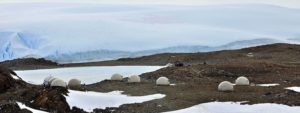 At 70° 45’ 51”South, 11° 37′ 01”East within the Schirmacher Oasis, Whichaway Camp (WAP MNB-NEW) is located within the wider study area comprise the Indian Maitri Research station (WAP IND-Ø3), and Russian Novolazarevskaya Research station (WAP RUS-Ø9).
At 70° 45’ 51”South, 11° 37′ 01”East within the Schirmacher Oasis, Whichaway Camp (WAP MNB-NEW) is located within the wider study area comprise the Indian Maitri Research station (WAP IND-Ø3), and Russian Novolazarevskaya Research station (WAP RUS-Ø9).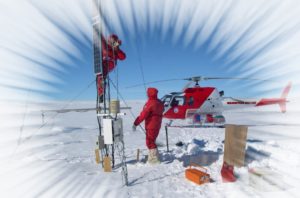 The 16th edition of the Antarctic Activity Week (AAW) will be on air next February 16th and will last till the 24th.
The 16th edition of the Antarctic Activity Week (AAW) will be on air next February 16th and will last till the 24th.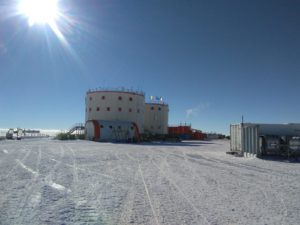 Danilo IZ1KHY is actually at Concordia Station (WAP MNB-Ø3) following a group of researchers. He will stay at Concordia till Jan 15th.
Danilo IZ1KHY is actually at Concordia Station (WAP MNB-Ø3) following a group of researchers. He will stay at Concordia till Jan 15th. Not to forget that, when there is air traffic, the HF radio is room is busy for the air traffic controllers.
Not to forget that, when there is air traffic, the HF radio is room is busy for the air traffic controllers.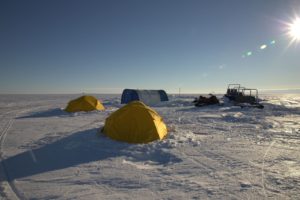 The Atka Bay Skiway site (70°36’45” S, 8°07’25” W) is the location of the Emperor Penguin colony. The Camp, managed by White Desert Company lies not too far away to the structure of German Research Station Neumayer III (70°40´S, 8°16´W), and stands right between Neumayer III (WAP DEU-Ø8) and Neumayer Emergency Base (WAP ZAF-11).
The Atka Bay Skiway site (70°36’45” S, 8°07’25” W) is the location of the Emperor Penguin colony. The Camp, managed by White Desert Company lies not too far away to the structure of German Research Station Neumayer III (70°40´S, 8°16´W), and stands right between Neumayer III (WAP DEU-Ø8) and Neumayer Emergency Base (WAP ZAF-11). White Desert (
White Desert (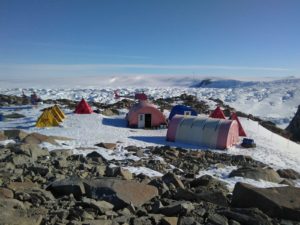 Located at 75°53’ South, 162°45’East, Starr Nunatak marking the North site of the mouth of Harbord glacier on the coast of Victoria Land, Antarctica.
Located at 75°53’ South, 162°45’East, Starr Nunatak marking the North site of the mouth of Harbord glacier on the coast of Victoria Land, Antarctica.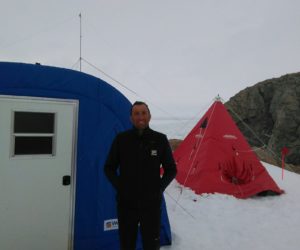
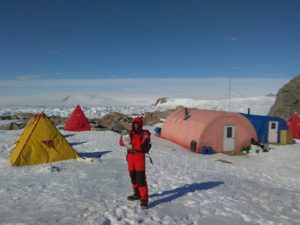 unfortunately, even if he did try hard, there was no openings to any other direction. To this remote site a new WAP reference MNB-1Ø has just been given .
unfortunately, even if he did try hard, there was no openings to any other direction. To this remote site a new WAP reference MNB-1Ø has just been given .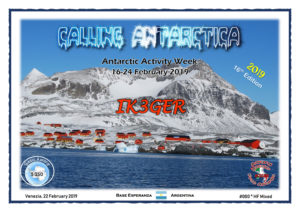 Every year, in the month of February, a special event called ANTARCTIC ACTIVITY WEEK is set up. This year, the 16th AAW will be held from February 16th to 24th.
Every year, in the month of February, a special event called ANTARCTIC ACTIVITY WEEK is set up. This year, the 16th AAW will be held from February 16th to 24th. The “New collection TAAF 2019” marks the tribute to Mario Zucchelli, director of the Italian Antarctic Program, who deceased on 24/10/2003,
The “New collection TAAF 2019” marks the tribute to Mario Zucchelli, director of the Italian Antarctic Program, who deceased on 24/10/2003,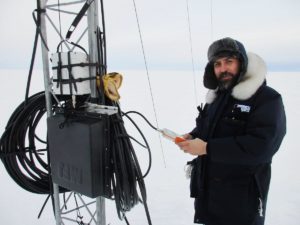 Matthias, DH5CW (Pic to the Left), and Felix, DL5XL (Pic to the Right), will be active from Neumayer Emergency Base (also known as SANAP Summer Base, WAP ZAF-11), Grid Locator IB59uj, from January 8 to 9, 2019 (weather permitting). The call sign used will be DP0GVN/p.
Matthias, DH5CW (Pic to the Left), and Felix, DL5XL (Pic to the Right), will be active from Neumayer Emergency Base (also known as SANAP Summer Base, WAP ZAF-11), Grid Locator IB59uj, from January 8 to 9, 2019 (weather permitting). The call sign used will be DP0GVN/p.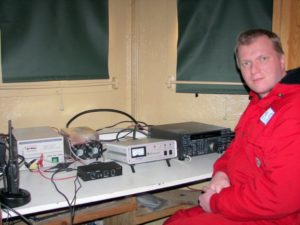
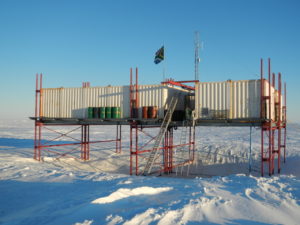 SANAP Summer Station/Neumayer Emergency Base 70º38´59´´South, 08º14´59´´West, WAP ZAF-11
SANAP Summer Station/Neumayer Emergency Base 70º38´59´´South, 08º14´59´´West, WAP ZAF-11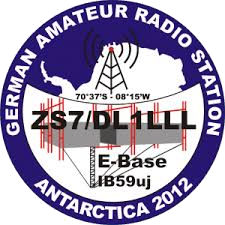 Today, just the garage is used as a storage facility by SANAP.
Today, just the garage is used as a storage facility by SANAP.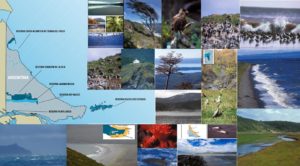 Hams of Radio Club Ushuaia plan to activate the six protected areas of the Tierra del Fuego Province, doing radio activity in each and every one of them. Date will be announced gradually as long as each the small expedition is fully organized. The tentative calendar includes January, February and March 2019.
Hams of Radio Club Ushuaia plan to activate the six protected areas of the Tierra del Fuego Province, doing radio activity in each and every one of them. Date will be announced gradually as long as each the small expedition is fully organized. The tentative calendar includes January, February and March 2019.